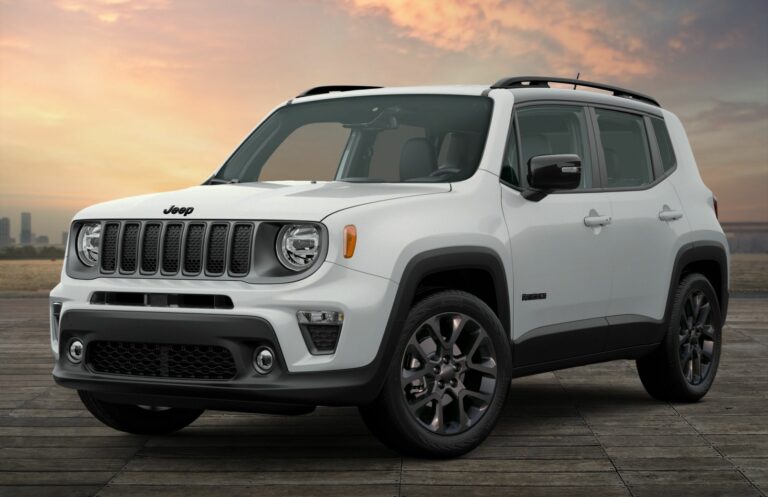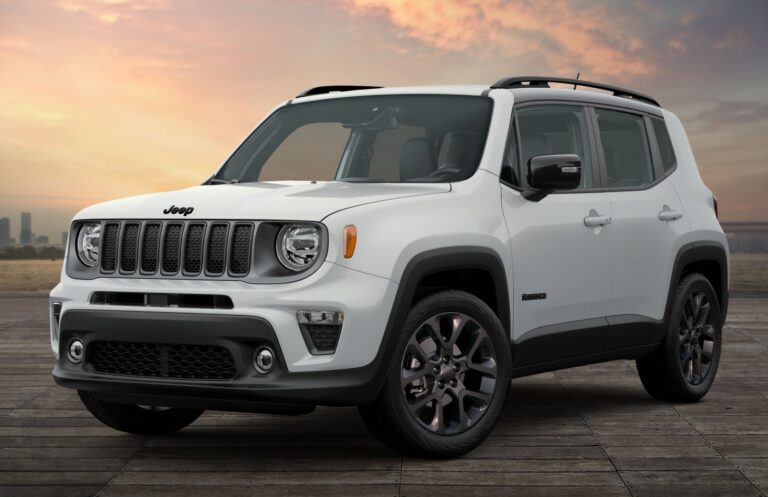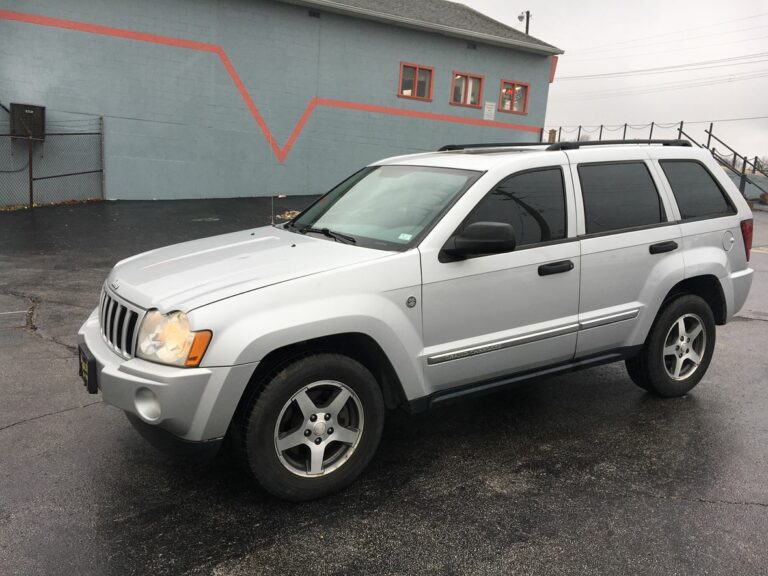Jeep Cherokee Trailhawk Lift Kit: Elevate Your Adventure
Jeep Cherokee Trailhawk Lift Kit: Elevate Your Adventure jeeps.truckstrend.com
The Jeep Cherokee Trailhawk is renowned for its impressive off-road capabilities right from the factory. Equipped with features like the Active Drive Lock 4×4 system, Selec-Terrain Traction Management, skid plates, and increased ground clearance, it stands out as a highly competent compact SUV. However, for those who truly push the boundaries of exploration or simply desire a more aggressive stance, the stock setup, while capable, can still leave room for enhancement. This is where a Jeep Cherokee Trailhawk Lift Kit comes into play. It’s more than just an aesthetic upgrade; it’s a strategic modification designed to unlock an even higher level of performance, allowing your Trailhawk to conquer more challenging terrain and accommodate larger, more aggressive tires, ultimately transforming it into an even more formidable off-road machine.
Understanding the Trailhawk’s Off-Road Foundation
Jeep Cherokee Trailhawk Lift Kit: Elevate Your Adventure
Before delving into lift kits, it’s essential to appreciate the Trailhawk’s inherent strengths. Unlike standard Cherokees, the Trailhawk variant boasts a factory lift, enhanced approach, departure, and breakover angles, and robust underbody protection. Its unibody construction and independent suspension, while offering excellent on-road comfort and handling, also dictate the type and extent of lift modifications that are feasible. While these features make it highly capable for moderate trails, a lift kit further extends its reach, allowing it to clear larger obstacles, navigate deeper ruts, and run tires that provide superior traction and flotation in extreme conditions.
The Transformative Benefits of a Trailhawk Lift Kit
Installing a lift kit on your Jeep Cherokee Trailhawk offers a multitude of advantages, significantly enhancing both its performance and presence:
- Increased Ground Clearance: This is the primary benefit. A lift kit raises the vehicle’s undercarriage further from the ground, reducing the risk of scraping the frame, differential, or other vital components on rocks, roots, or uneven terrain. This translates directly to an improved ability to traverse more challenging obstacles without damage.
- Accommodating Larger Tires: One of the most compelling reasons to lift a Trailhawk is to fit bigger tires. Larger tires provide a greater contact patch for improved traction, especially in loose or soft conditions like sand and mud. They also inherently increase overall ground clearance and improve ride quality over rough terrain by absorbing more impact.
- Enhanced Approach, Departure, and Breakover Angles: By lifting the vehicle, the angles at which your Trailhawk can approach obstacles (approach angle), clear them from the rear (departure angle), and pass over the apex of a hill without high-centering (breakover angle) are all significantly improved. This directly translates to greater capability on steep inclines, declines, and crests.
- Improved Off-Road Capability and Confidence: With greater clearance and larger tires, your Trailhawk becomes more capable of tackling advanced trails, crossing deeper water, and navigating more challenging terrain with increased confidence. This opens up new possibilities for exploration and adventure.
- Aggressive Aesthetics: Beyond performance, a lifted Trailhawk simply looks more rugged and imposing. The elevated stance and larger tires give it a more commanding presence, appealing to those who appreciate the classic off-road vehicle aesthetic.

Navigating the Types of Lift Kits for Your Trailhawk
Given the Trailhawk’s independent front and rear suspension (IFS/IRS) and unibody design, the types of lift kits available differ from traditional body-on-frame Jeeps. The most common and effective solutions include:
- Spacer Lifts (Budget Boosts): These are the most common and often the most affordable lift solutions for the Trailhawk. They involve installing spacers above the factory coil springs or struts.
- Pros: Relatively inexpensive, straightforward installation, maintains factory ride quality, and offers a modest lift (typically 1-2 inches).
- Cons: Does not increase suspension travel, can sometimes lead to premature wear on factory components if not designed properly, and the maximum lift height is limited.
- Coil Spring Lifts: This type replaces the factory coil springs with longer, sometimes stiffer, aftermarket springs.
- Pros: Can offer a more significant lift than spacers, potentially improved articulation and ride quality (if matched with appropriate shocks), and increased load-carrying capacity.
- Cons: More expensive than spacers, more involved installation, and can alter the vehicle’s factory ride characteristics if not properly engineered.
- Strut/Shock Combination Lifts: These kits typically replace the entire factory strut and shock assembly with longer, often performance-tuned, aftermarket units. Sometimes they incorporate new coil springs as well.
- Pros: Offers the best performance gains, superior damping and articulation, designed for heavy off-road use, and can significantly improve suspension travel.
- Cons: Most expensive option, often requires professional installation, and can significantly alter ride quality if not properly tuned for daily driving.


Note: True "body lifts" are not applicable to the unibody Jeep Cherokee Trailhawk.
Essential Considerations Before Lifting Your Trailhawk
Before investing in a lift kit, it’s crucial to weigh several important factors to ensure you make the right choice for your needs and budget:
- Desired Lift Height vs. Practicality: While more lift might seem better, anything beyond 1.5-2 inches on a Trailhawk can start to introduce significant challenges. Excessive lift can put undue stress on CV joints, steering components, and suspension angles, leading to premature wear and potentially a compromised ride. Most Trailhawk owners find 1.5-2 inches ideal for fitting larger tires (e.g., 245/70R17 or 255/65R17) without extensive modifications.
- Tire Size Compatibility and Rubbing: A lift kit is often paired with larger tires. Research the maximum tire size your chosen lift kit allows without rubbing, especially during full suspension compression or steering lock. Be prepared for potential minor trimming of plastic fender liners.
- Impact on Ride Quality and Handling: Spacer lifts generally maintain the factory ride, while new coil springs or full strut/shock replacements can alter it. Consider if you prioritize off-road performance over daily driving comfort.
- Suspension Geometry and Alignment: Lifting an IFS vehicle changes its suspension geometry. A proper alignment after installation is absolutely critical to prevent uneven tire wear, maintain proper steering, and avoid premature wear on components like CV axles and ball joints. Some kits may require additional components like adjustable control arms to correct angles.
- Installation Complexity and Cost: Spacer lifts can often be installed by a competent DIY mechanic. However, coil spring or full strut/shock replacement kits are more involved and may require specialized tools (like a spring compressor) or professional installation, which adds to the overall cost.
- Warranty Implications: Modifying your vehicle’s suspension can potentially impact your factory warranty, especially if a failure is directly attributed to the aftermarket parts. It’s wise to consult with your dealership about their policy on aftermarket modifications.
- Local Laws and Regulations: Some regions have laws regarding maximum vehicle height or tire protrusion. Ensure your modifications comply with local regulations.
The Installation Process: What to Expect
While a detailed step-by-step guide is beyond the scope of this article, here’s a general overview of what’s involved in installing a Trailhawk lift kit:
- Preparation: Gather necessary tools (jack, jack stands, torque wrench, socket set, possibly a spring compressor), ensure a safe, level workspace, and read the kit’s instructions thoroughly.
- Disassembly: Securely lift the vehicle and remove the wheels. Depending on the kit type, you’ll need to disconnect various suspension components, including sway bar links, brake lines (ensure not to overstretch), and ultimately the factory struts/shocks and/or coil springs.
- Installation of New Components: Install the new spacers, coil springs, or complete strut assemblies according to the manufacturer’s instructions. This often involves careful alignment and torqueing to specified values.
- Reassembly: Reconnect all disconnected components, ensuring everything is properly secured and torqued.
- Post-Installation: Lower the vehicle. It is imperative to get a professional wheel alignment immediately after installation. Test drive the vehicle thoroughly to check for any unusual noises, vibrations, or rubbing, especially during turns and over bumps.
Choosing the Right Lift Kit and Essential Accessories
When selecting a lift kit, prioritize quality and compatibility. Look for reputable manufacturers known for producing kits specifically designed for the KL Cherokee Trailhawk, such as Dobinsons, Rough Country, or MFC Offroad. Read reviews and consider what others with similar goals have used successfully.
Beyond the lift kit itself, consider these accessories:
- Larger Tires: Often the primary motivation for a lift. Choose an All-Terrain (A/T) or Mud-Terrain (M/T) tire that balances your on-road and off-road needs.
- Aftermarket Wheels: If you opt for significantly wider tires, you might need wheels with a different offset to prevent rubbing on suspension components.
- Alignment Cam Bolts or Adjustable Control Arms: For lifts exceeding 1.5-2 inches, these might be necessary to correct camber and caster angles, ensuring proper alignment and preventing premature tire wear.
- Extended Sway Bar Links: Some kits may include or recommend these to maintain proper sway bar geometry and articulation.
Maintenance and Long-Term Ownership
A lifted Trailhawk requires mindful maintenance. Regularly inspect all suspension components for wear, especially CV boots and joints, ball joints, and bushings. Pay attention to any new noises or changes in handling. Regular wheel alignments are crucial to preserve tire life and maintain steering precision. Be aware that some components might experience accelerated wear due to altered angles and increased stress from larger tires and more aggressive off-road use.
Jeep Cherokee Trailhawk Lift Kit Price Guide
The cost of a Jeep Cherokee Trailhawk lift kit can vary significantly based on the type of kit, the manufacturer, and whether you opt for professional installation. This table provides estimated price ranges:
| Lift Kit Type | Kit Price (USD) | Professional Installation Cost (USD) | Estimated Total Cost (USD) | Key Features / Notes |
|---|---|---|---|---|
| Spacer Lift (1-2 inch) | $200 – $500 | $300 – $600 | $500 – $1,100 | Most affordable, maintains factory ride, moderate lift. |
| Coil Spring Lift (1.5-2.5 inch) | $500 – $1,000 | $500 – $1,000 | $1,000 – $2,000 | Improved articulation, potentially better ride, more involved installation. |
| Strut/Shock Combination Lift (2-3 inch) | $1,000 – $2,500 | $800 – $1,500 | $1,800 – $4,000+ | Best performance, increased travel, typically requires professional installation. |
| Alignment (Post-Install) | $100 – $200 | (Included in total install estimate) | Add to above costs | Mandatory after any suspension modification to prevent tire wear and handle issues. |
Note: Prices are estimates and can vary widely based on brand, retailer, location, and specific labor rates. These figures do not include the cost of new tires or wheels, which can add another $800 – $2,000+.
Frequently Asked Questions (FAQ) about Jeep Cherokee Trailhawk Lift Kits
Q: How much lift can I realistically get on my Trailhawk without major issues?
A: Most Trailhawk owners find that 1.5 to 2 inches of lift is the sweet spot. Anything beyond that can introduce significant stress on CV joints and require more extensive modifications to maintain proper suspension geometry.
Q: What’s the biggest tire size I can run with a typical 2-inch lift?
A: With a 2-inch lift, many Trailhawk owners can comfortably fit 245/70R17 (approx. 30.5 inches diameter) or 255/65R17 (approx. 30.1 inches diameter) tires, often with minor plastic trimming required at full steering lock or suspension compression. Larger tires might require significant fender modification.
Q: Will installing a lift kit void my Jeep’s warranty?
A: Not necessarily entirely. Under the Magnuson-Moss Warranty Act, a dealership must prove that the aftermarket part caused the failure of a factory component to deny a warranty claim. However, components directly affected by the lift (e.g., suspension, drivetrain if over-stressed) might have their warranty claims denied if the lift is deemed the cause. It’s always best to discuss with your dealership.
Q: Is it difficult to install a lift kit myself?
A: Spacer lifts are generally more DIY-friendly for those with mechanical experience and proper tools. Coil spring or full strut/shock replacement kits are more complex, often requiring specialized tools like a spring compressor, and are usually best left to professional shops.
Q: Do I need new shocks/struts with a spacer lift?
A: For mild spacer lifts (1-2 inches), factory shocks/struts are often retained. However, new shocks/struts designed for the increased travel can improve ride quality and durability, especially off-road.
Q: Will a lift kit negatively affect my Trailhawk’s on-road ride quality?
A: It depends on the type of kit. Spacer lifts typically have minimal impact on ride quality. Coil spring or full strut/shock replacement kits, if not properly engineered or matched to your driving style, can lead to a stiffer or different ride feel.
Q: Do I need an alignment after installing a lift kit?
A: Yes, absolutely. A professional wheel alignment is mandatory after any suspension modification to correct altered angles (camber, caster, toe) and prevent premature tire wear, steering issues, and compromised handling.
Conclusion: Elevate Your Trailhawk, Elevate Your Adventure
A Jeep Cherokee Trailhawk lift kit is an investment that truly unlocks the full potential of this already capable SUV. By increasing ground clearance, enabling larger tires, and improving critical off-road angles, it transforms your Trailhawk into an even more formidable machine, ready to tackle tougher trails and deeper challenges. While the process requires careful consideration of kit types, associated costs, and potential impacts on your vehicle, the rewards in enhanced capability, confidence, and aesthetic appeal are undeniable. With an informed decision and proper installation, your lifted Trailhawk will not only look the part but perform it, too, empowering you to explore further and embrace the spirit of adventure like never before.






